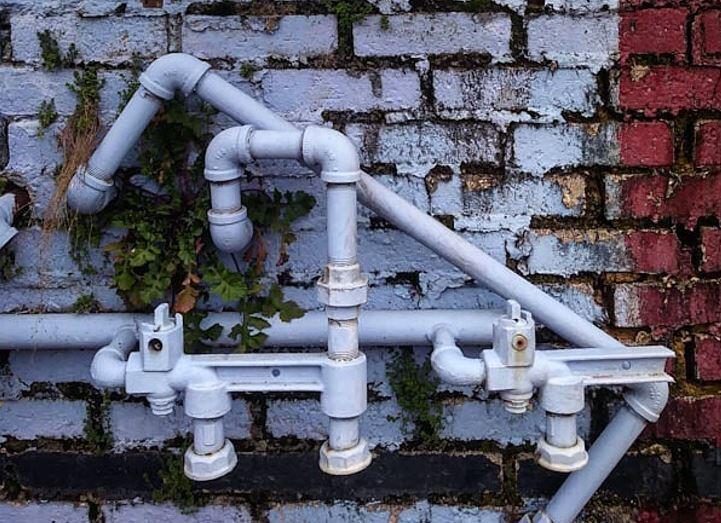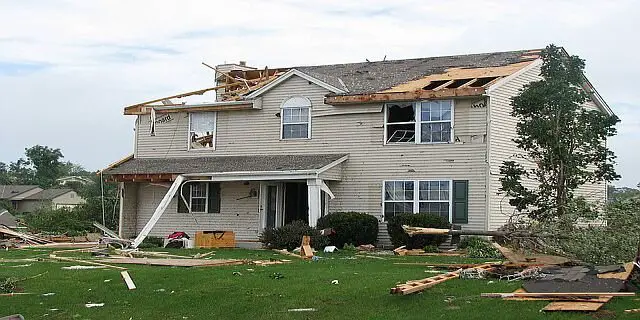Your home is your most prized paradise, a den filled with love, memories, and tranquillity. But it also faces almost all other disasters, such as earthquakes, floods, storms, sudden fire eruptions, and water leakages. These could lead to psychological shock and huge losses that may turn your tranquil home into a stress factor. Though some cannot be helped, most damages can be minimized or avoided if proper precautions are taken.
This guide discusses some of the most common causes of home damage, practical measures that one could take to prevent them, and what to do once a disaster has occurred.
Understanding the Common Causes of House Damages
The nature and types of home damage that may occur are innumerable, mostly sudden, and can be so expensive in terms of repair costs and discomforts caused. By understanding what generally causes home damage, you can take prudent steps to safeguard your property and reduce risks effectively. Detailed below are the key contributors to home damage and the critical essence of promptly addressing them:
Water Damage
Water damage is the most common problem homeowners face, from heavy rain to burst pipes, clogged drains, and malfunctioning appliances. Water seeps into walls and floors, compromising their structural integrity and fostering mould growth. Solving water issues is very important, considering the long-term deterioration of properties and value.
Fire Damage
Fires are disastrous, and in just seconds, they become uncontrollable, from cooking accidents to electrical faults and unmonitored candles. The tiniest fire will leave smoke and soot, which permeate surfaces and air, leaving behind odours and health risks. Minimize fire risks by addressing the fire hazards and installing smoke detectors in your home.

Storm and wind damage
High winds and severe storms can cause hail damage to your property. Common manifestations include broken window panes, leaky roofs, and falling trees on the roof and walls. Preparing your home with reinforced roofs and storm shutters will greatly reduce these incidences and provide peace of mind.
Mold and Mildew
Mould grows when conditions are damp. It mainly thrives after water intrusion and poor ventilation. Its spores spread quickly and can pose health risks to people, especially those with asthma and allergic problems. Cleaning and regular maintenance of indoor humidity will prevent mould growth.

Infestation of Pests
Termites, rodents, and ants silently destroy your home. For example, termites eat away at the wood and compromise the home’s structural integrity, while ants and rodents can ruin insulation, wiring, or things packed away. The key to addressing this is observing the early stages of infestation and applying proper sealing and cleanliness techniques to prevent further property damage.
Proactive Steps in Prevention of Home Damage
While disasters can be unpredictable, proactive measures can significantly reduce the possibility of home damage and keep it a haven. Key steps to safeguard your home from potential threats include:
Routine maintenance
First in the line of defence is to keep your home in good condition. That is to say, periodically check the roof, gutters, and drainage systems to see if they are debris-free or working optimally. The attention to some minute issues, such as a loose shingle or clogged gutter, will save a fortune in costly repairs someday.
Invest in Quality Materials
Construction and renovation using durable and weather-resistant materials for harsh weather will do wonders. Impact-resistant windows, metal roofing, and treated wood would go a long way to strengthening your house and adding value and years.
Install Alarms and Sensors
Technology can be your saviour in disaster prevention. Install smoke detectors in every room, carbon monoxide alarms near sleeping areas, and water leak sensors in areas most prone to plumbing problems. These early warning systems help notify you of a problem before the damage has mounted.
Prepare for Storms
In areas prone to severe weather, storm-proofing your home is necessary. This would entail securing furniture and other decorations outdoors, removing overhanging tree branches that can fall on your house, and installing storm shutters on windows in the event of strong winds or hailstorms.
Maintain Plumbing Systems
Regular plumbing inspections spare you the headache of water damage. Check for wear on pipes and that appliances such as washers and dishwashers operate properly. If resolved early, small leaks can prevent larger problems, such as flooding and mould growth, from developing.

Create an Emergency Plan
One of the most overlooked ways of prevention is having an emergency plan. Teach your family about evacuation routes, emergency contact numbers, and the location of the shut-off valves for water, gas, and electricity. Being prepared in itself makes a world of difference during an emergency.
Steps to Take After Home Damage
The aftermath of the home damage could be overwhelming; therefore, taking appropriate actions right after can prevent further damage and hasten the process of recovery. Following are a few key steps to be taken to make the process of restoration smooth:
Safety First
Enter your home only when authorities have declared it safe. Watch for damage to structures, exposed wires, gas leaks, or other hazards. Ask professionals or disaster response teams to check the building to ensure safety. Keep your family and pets away until then.
Document the Damage
Thoroughly document the damage before starting any cleanup or repairs. Use photographs and videos to capture every affected area and item. This visual evidence is crucial for insurance claims, helping to substantiate your case and ensuring accurate reimbursement.
Contact Professionals
That is why professional restorers need to be involved. They can assess the extent of the appliance’s damage and provide specific solutions. For example, in cases of flooding, services dealing with water damage restoration in Allentown will clean up the water situation, including drying, mould prevention, and structural repairs. Professional help will ensure that restoration is thorough and safe.
Notify Your Insurance Provider
Contact your insurance company promptly to report the damage and initiate the claims process. Provide them with the documentation you’ve gathered and follow their guidance on the necessary steps. Timely notification can expedite claims and reduce out-of-pocket expenses.
Begin the Restoration Process
Cleanup and repairs should start when the incident has been secured and claims filed. Professional restoration workers will handle tasks such as mould remediation, smoke, and soot cleanup, among other structural repairs. Their skill in restoring your home to its pre-damage condition cannot be underestimated, including all the standards regarding safety.
Quicker and correct steps thus reduce the burden of damages to your home and help you regain the required living space.
Why You Require Professional Restoration Services
When your house is badly damaged, the urge to take care of repairs alone might be overwhelming. However, professional restoration services have unparalleled expertise and resources that ensure the work is done correctly and thoroughly. Here’s why hiring professionals is important:
Experience
Professionally trained personnel are competent in assessing the extent of the damage, even hidden problems such as structural instability or mould growth. With experience, they can offer specific solutions to avoid long-term complications and ensure your home is inhabitable.
Advanced Equipment
Restoration companies use industrial dehumidifiers, moisture meters, and air scrubbers to ensure that every corner of your home is cleaned and dried to the dot. This ensures minimal chances of mould and other secondary damages that could have been missed in a DIY project.
Fast Response Time
With home damage, time is of the essence. Professional services have quick response teams, which avoid further damage—be it water spreading or smoke settling onto surfaces. Their efficiency speeds up the recovery process and reduces repair costs.
Insurance Assistance
It can be overwhelming to handle the whole insurance claim process. Most restoration companies will document the damages for you, write reports, and communicate with your insurance company. Their experience can help ensure a smooth claims process and maximize your benefits.
Comprehensive Services
Professionals provide end-to-end solutions, from cleaning up to complete restoration. Be it water extraction, mould remediation, or structural repairs, professionals handle everything effectively. This saves the homeowner time and effort and prevents the risk of overlooking critical steps in the recovery process.
Bottomline
Home damage is one of those unexpected moments that come as an overwhelming experience, bringing financial and emotional stress. But well-planned and supported, recovery is not only possible, but it’s also an opportunity to make your home resilient. Understanding the ordinary risks of water damage, fire, or storms informs you on how to take proactive steps to mitigate potential hazards.
Implementing preventive measures and vigilance in maintenance will go a long way in reducing risks. Professional restoration services will handle any damages for adequate recovery. Your house can be returned with expert guidance in due time so that the well-being of your family is guaranteed.










